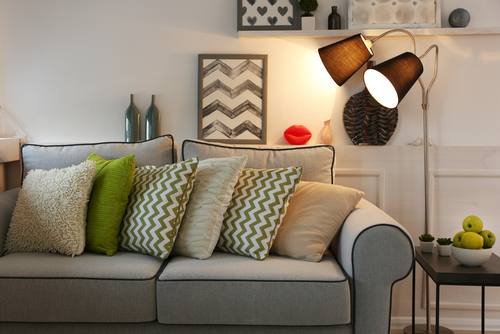LEDs Vs. CFLs: Which Is Better In Your Home?
Written By: Warm Thoughts Communications on February 8, 2021  When it comes to saving energy, the little things matter—and one of the most important little things you can do to lower your home’s energy bills is to be mindful of the type of lighting you use.
When it comes to saving energy, the little things matter—and one of the most important little things you can do to lower your home’s energy bills is to be mindful of the type of lighting you use.
Conventional light bulbs—commonly referred to as incandescent bulbs—are grossly inefficient. In fact, only about 10% of the energy used to keep an incandescent bulb powered up is used to create light; the rest is released as heat. In effect, when you use incandescent bulbs, your lamp is more effective as a space heater than as a light source!
The good news is that over the years, technology has given us alternatives to the incandescent bulb. The two most prominent replacement options available today are light-emitting diode (LED) bulbs and compact fluorescent light (CFL) bulbs. Both are available at your local hardware store, and both present a big energy-efficiency upgrade from incandescent bulbs.
Taking A Closer Look At Light Bulbs
Compact Fluorescent Light (CFL) Bulbs
- Compact fluorescent light (CFL) bulbs have a design lineage that dates back to the late 1930s.
- CFLs produce light differently than incandescent bulbs: for an incandescent, an electric current heats a filament until it glows. In a CFL, an electric current is sent through a tube containing argon and mercury vapor, generating ultraviolet light that excites a fluorescent coating (or phosphor) inside the tube. The phosphor emits visible light.
- CFLs need a little more energy when they are first turned on, but at full power they use 70% less energy than incandescent bulbs. The ballast—the non-tube portion of the bulb that screws into the light socket—starts the illumination process, then regulates the current once the electricity starts flowing. It takes up to three minutes for a CFL to reach full power, which is why it takes time for them to burn at their brightest.
- According to the Department of Energy, CFLs can pay for themselves in less than nine months, with additional cost savings kicking in each month thereafter. ENERGY STAR®-qualified CFLs last 10 times longer and are 25% more efficient than incandescent bulbs.
- CFLs have three main drawbacks: They are sensitive to temperature, which can limit their use in extreme conditions; they are available in a relatively limited range of shapes; and they contain small amounts of mercury, which mean they must be handled carefully when they break. (CFLs should be properly recycled, not discarded in your regular trash bin.)
Light-Emitting Diodes (LEDs)
- A light-emitting diode (LED) is a type of solid-state lighting that uses a semiconductor to convert electricity into light. The first LED was invented by Nick Holonyak, Jr., while he worked for GE, in 1962.
- LEDs are “directional” light sources, meaning they emit light in a specific direction, unlike incandescent and CFL bulbs, which emit light and heat in all directions.
- LEDs use energy about 67 times more efficiently than incandescent bulbs! An LED light converts more than 90% of its energy to light and loses only 10% as heat—the exact opposite of the performance of an incandescent bulb, as we mentioned earlier.
- Good-quality LED bulbs can have a useful life of 25,000 hours or more—that’s about 25 times longer than traditional light bulbs, and 2.5 times longer than CFLs. To put it into perspective: if you installed an LED light bulb in your child’s room when she was in the fourth grade and ran it eight hours a day, every day, you wouldn’t have to change it until she was off to college.
- LED technology allows light bulbs to form a vast array of shapes, which makes them the most useful light source.
- LEDs can be used in nearly any environment, and they contain no mercury. In fact, about 95% of an LED is recyclable.
To learn more about energy-efficient light bulbs, visit the U.S. Department of Energy’s website.
The Takeaway: LEDs Rule!
Although both CFLs and LEDs are big steps up from incandescent bulbs, the versatility, efficiency, eco-friendliness and durability of LEDs make them a clear winner in the CFL vs. LED matchup. While they cost more to buy and install, they result in lower energy bills and have a much longer lifespan than any other lighting option. They’re also better for the environment than CFLs (in several ways). The bottom line? Choose LEDs!
Want another way to lower your electricity bill? Switch your plan to Discount Power! Enroll in one of our money-saving electricity plans online today, or contact us to learn more about our smart, affordable energy plans available in your place of residence!
 When it comes to saving energy, the little things matter—and one of the most important little things you can do to lower your home’s energy bills is to be mindful of the type of lighting you use.
When it comes to saving energy, the little things matter—and one of the most important little things you can do to lower your home’s energy bills is to be mindful of the type of lighting you use.